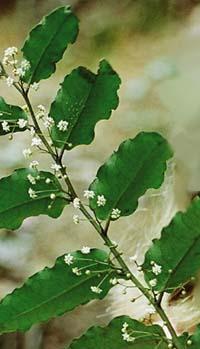They find a live fossil of flowering plants in the southern Pacific
2006/09/01 Elhuyar Zientzia Iturria: Elhuyar aldizkaria

In the pluvial forests of New Caledonia has been found a species that can be the key to understanding the evolution of plants with flowers. The plant, called amborela, has been studied by researchers from the University of Colorado, who believe it has spent 130 million years without just suffering modifications. Thus, amborel is a living fossil that resembles the plants of the Cretaceous and the Jurassic.
The ancestors of the current flowering plants -- angiosperimas- are not known, but the researchers believe that they could be similar to the ampoule. In fact, the ampoule keeps, together with the egg, a sterile cell that helps the egg in the female reproductive system. According to the researchers, this sterile cell is a testimony of the rapid changes suffered by plants in the Cretaceous and Jurassic, and will help unravel how angiosperms emerged.




